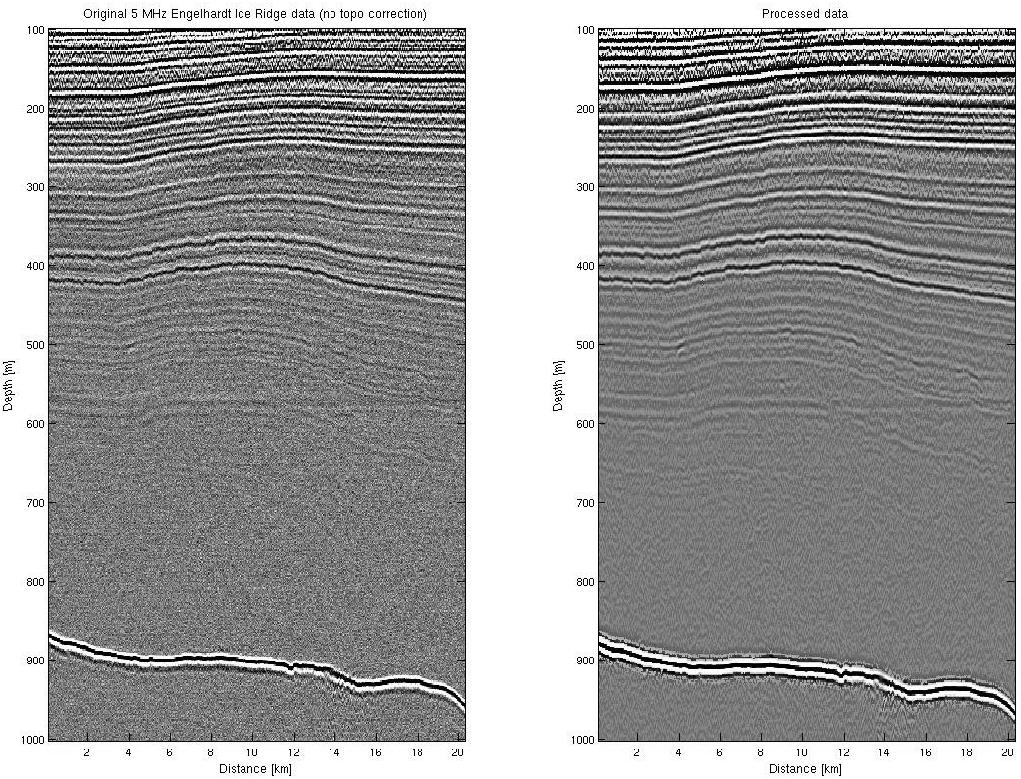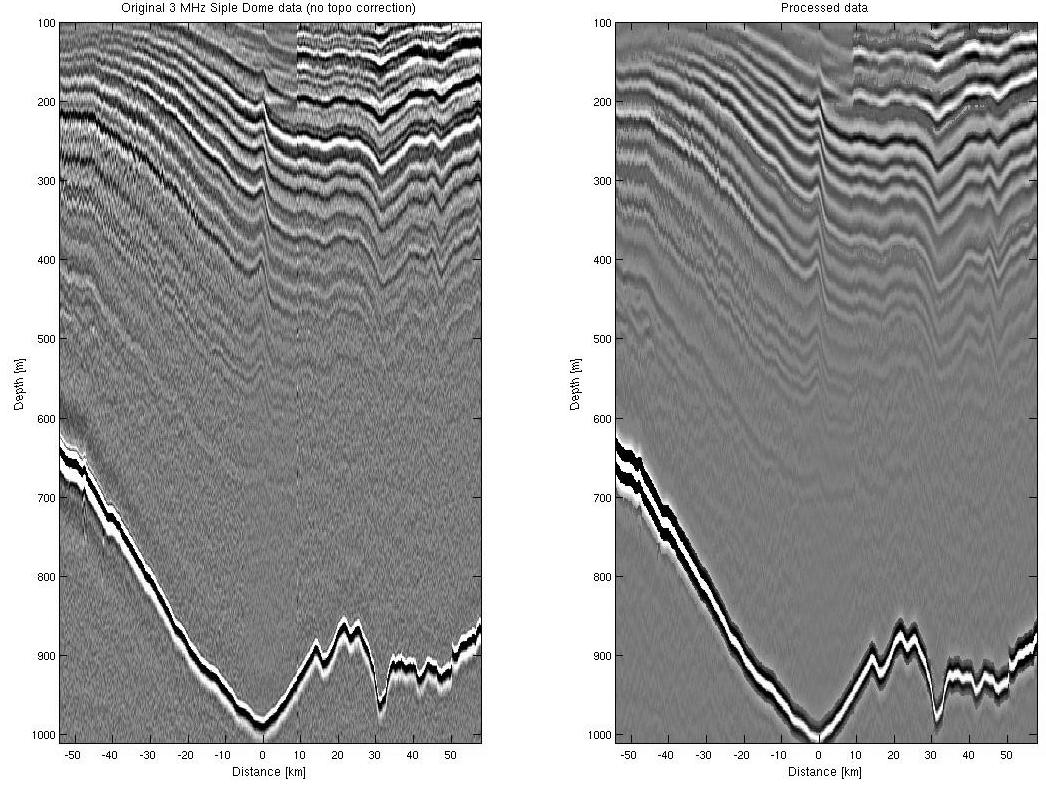New radar layers at Siple Dome and Engelhardt Ice Ridge?
Dale Winebrenner (1), Joseph MacGregor (2), John Sylvester (3), and Howard Conway (2)
University of Washington, Seattle
(1) Applied Physics Lab
(2) Dept. of Earth & Space Sciences
(3) Dept. of Mathematics
Mapping deep and continuous radar layers enables the extension of age-depth scales from ice cores and, in the Siple Coast region, a better interpretation of Holocene deglaciation. In order to improve detection of isolated radar layers across wider areas, we have applied several processing schemes to 3-5 MHz radar transects from Siple Dome and Engelhardt Ice Ridge. These methods include differential semblance, sloped lateral averaging, matched filtering and adjacent echo cross-correlation. Observed deeper layers (assumed to be isochrons) can be used to extend age-depth scales from Siple Dome if they can be correlated with features observed in the core.
Using sequences of these methods, several deeper layers previously appeared discontinuous or incoherent after only bandpassing can now be justifiably extended for several tens of km across the study areas. Matched filtering requires a reflector model, for which we use a laterally-averaged bed reflector. Differential semblance and sloped lateral averaging require limits on the maximum layer slopes to be tested, which we estimated from the flanks of the Raymond bumps at Siple Dome. By windowing about layers of interest and then cross-correlating each trace with adjacent traces, a metric that quantifiably separates layers from noise has been developed. This approach is based on a confidence test that the layer is not white noise and it extends layer identification beyond simple visual continuity.
The layer that intersects the Siple Dome core near 675 m is considerably sharpened on the south flank and possibly extended into the thicker ice of the north flank (Figure 1). At Engelhardt Ice Ridge, a pair of deep layers that were not previously traceable due to their weak magnitude and a time-synchronous system glitch become easily observable (Figure 2), and their trends diverge near the summit from that predicted by shallower layers.
These methods allow more robust layer identification and detection than simply applying time-varying gain and bandpass filters. Also, they are best-suited to detected weak, deep and isolated layers. This is because closely-spaced shallow layers can be obscured by the multi-peak result of the cross-correlation performed by matched filtering that is common with radar pulses. Shallower layers from low-frequency radar are less consequential for the age-depth scale, but they can also potentially be recovered via a careful deconvolution using the mean bed reflector as a source model.


